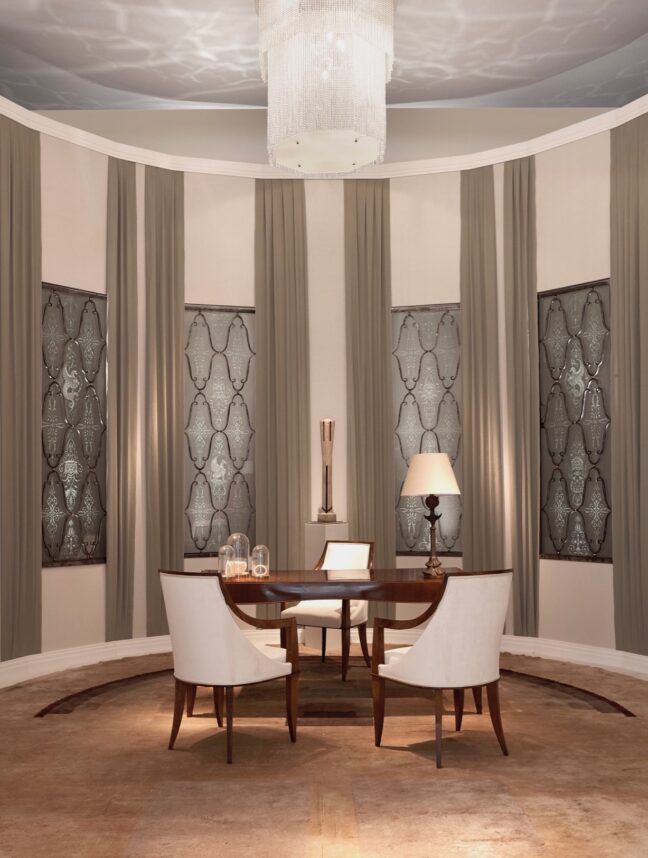French gallerist Félix Marcilhac could arguably trace the roots of his career back to a vase by Paris-based Hungarian artist Gusztáv Miklós. The item in question was purchased by his father, Félix Marcilhac Sr., in the early 1960s and it was the piece that inspired the art historian and appraiser to become an early champion of Art Nouveau and Art Deco pieces – and eventually, to found Galerie Marcilhac in Paris in 1969.
The rest of Marcilhac’s family were just as enthusiastic about art and design, and the path his life has taken, he says, feels destined. “Passion triggers such solid impulses and emotions that one cannot be insensitive to it,” he says. “So, I inevitably developed the same passion for the art market world as my family.” In particular, Marcilhac is drawn to what he describes as “our daily allies” – the furniture and art objects that bring a sense of whimsy and delight to everyday life.
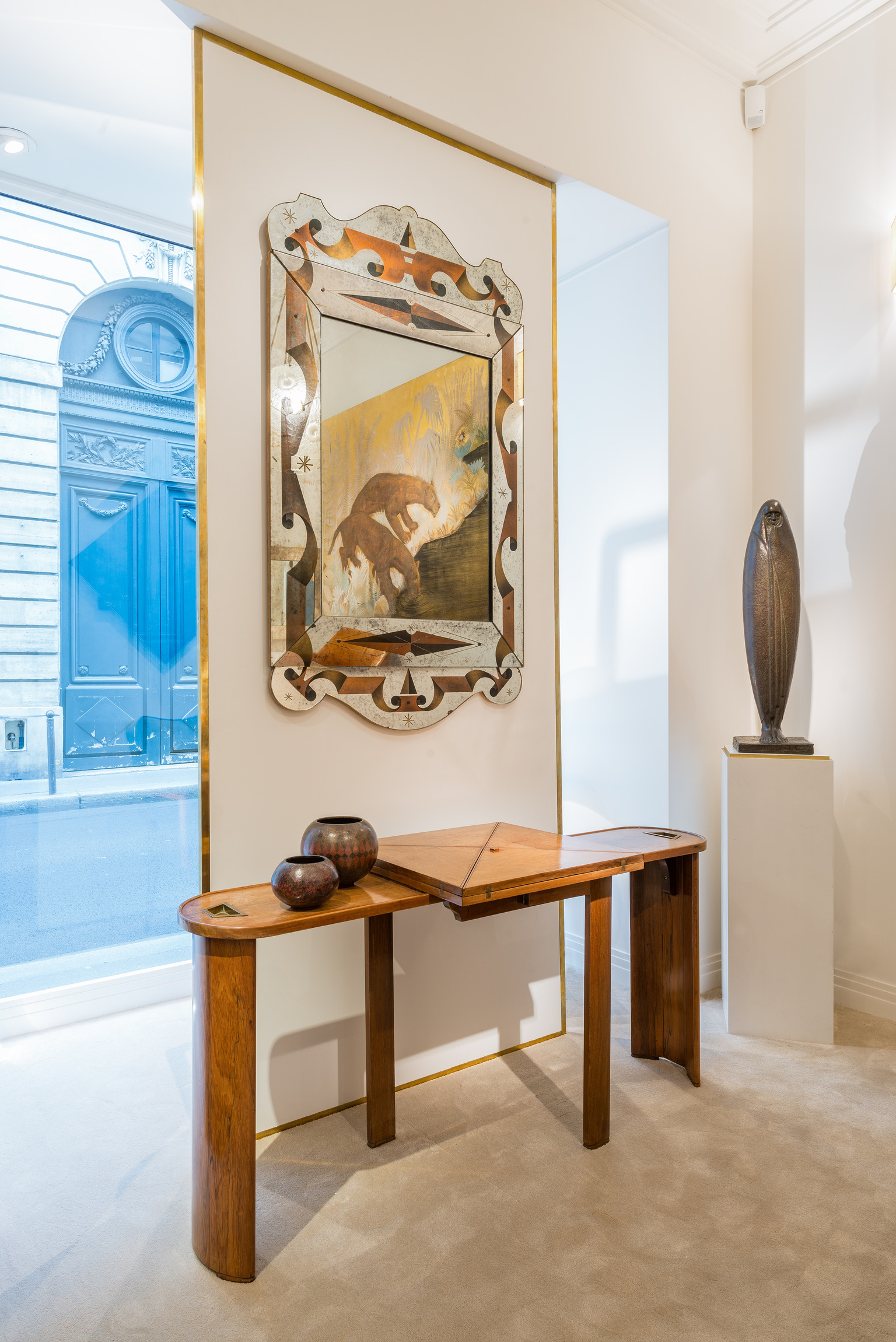
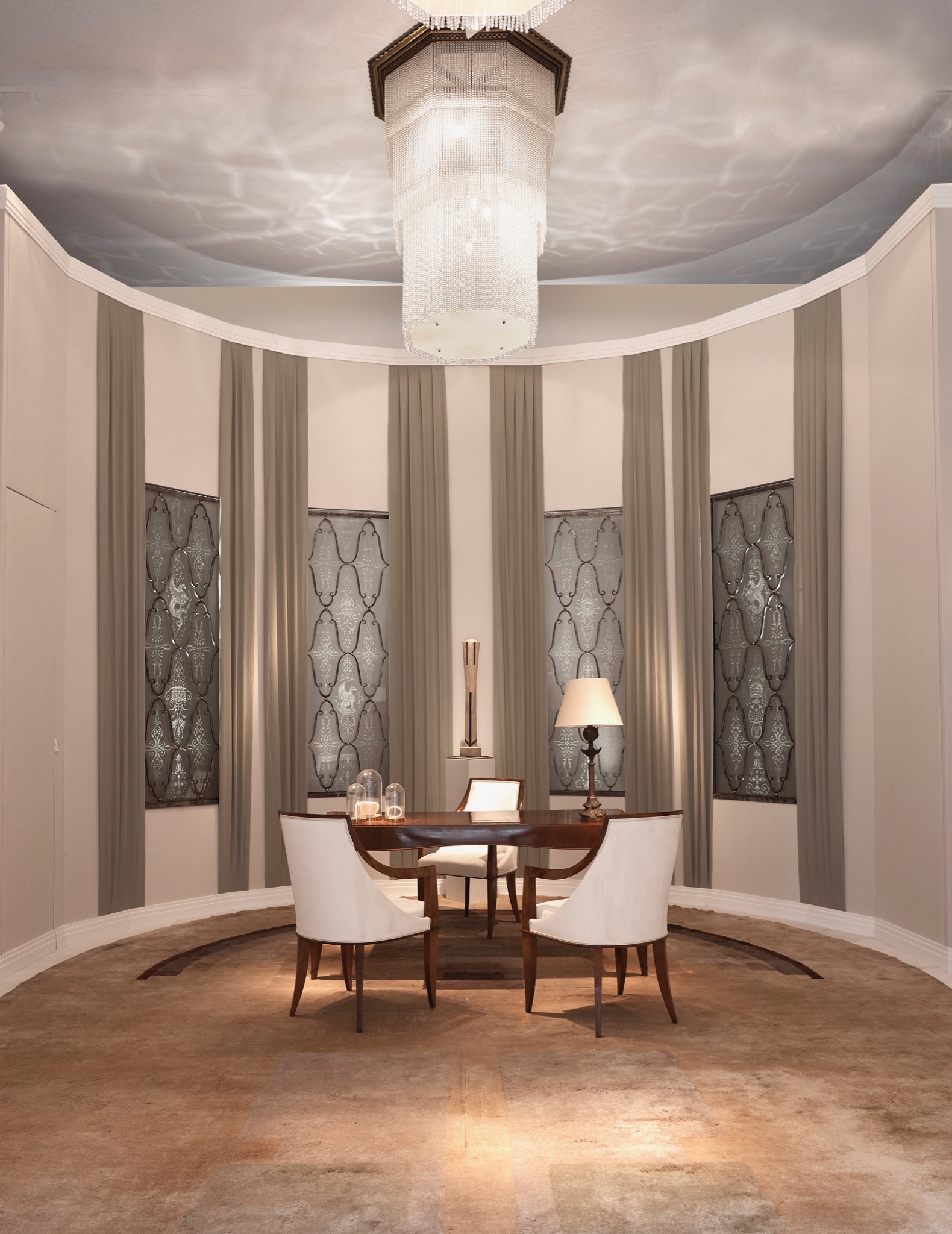
When Galerie Marcilhac was founded, it was primarily an exhibition space. The fashion was for 18th-century furniture and there was little interest in the Art Deco period, apart from a small group of dedicated art dealers driven by passion. Besides which, Marcilhac Sr. loved the objects he collected so much that he found them difficult to part with. Soon, however, the world caught up and he was selling pieces to some of recent history’s most influential creatives, including Yves Saint-Laurent, Pierre Bergé, and Andy Warhol.

During these formative years, Marcilhac was training with his father, learning the ropes of the art world. After a stint abroad, he returned to Paris to work with his father, and he became Gallery Director in 2005 –with a mission to not only continue his father’s dedication to 20th-century decorative arts, but to evolve it.
My father had opened the gallery for his pleasure and a few connoisseurs. I wanted to open it to the world.
Félix Marcilhac
“My father had opened the gallery for his pleasure and a few connoisseurs,” recalls Marcilhac. “I wanted to open it to the world.” To raise visibility, the gallery developed its programme of exhibitions and sought active participation in local and international fairs, such as Biennale de Paris, Salon Art + Design in New York, PAD London and Geneva, and the BRAFA Art Fair in Brussels, to gain visibility. “At each fair, it is an opportunity to present the most beautiful and iconic pieces of the gallery – to create a sensation,” says Marcilhac.

With this approach, Marcilhac’s ambition was quickly achieved. Today, 17 years after Marcilhac became Gallery Director, the gallery is one of the most respected – and oldest – Parisian galleries devoted to celebrating the work of French designers from the 1920s to 1940s. Think carved screens adorned with gold lacquer by Swiss-French artist Jean Dunand that were once installed in the Smoking Salon of the luxury Compagnie Générale Transatlantique cruise liner, SS Normandie; or an exquisite walnut, oak and patinated wrought iron desk by French architect and designer Pierre Chareau that originally furnished the historic Maison de Verre of Jean and Annie Dalsace.
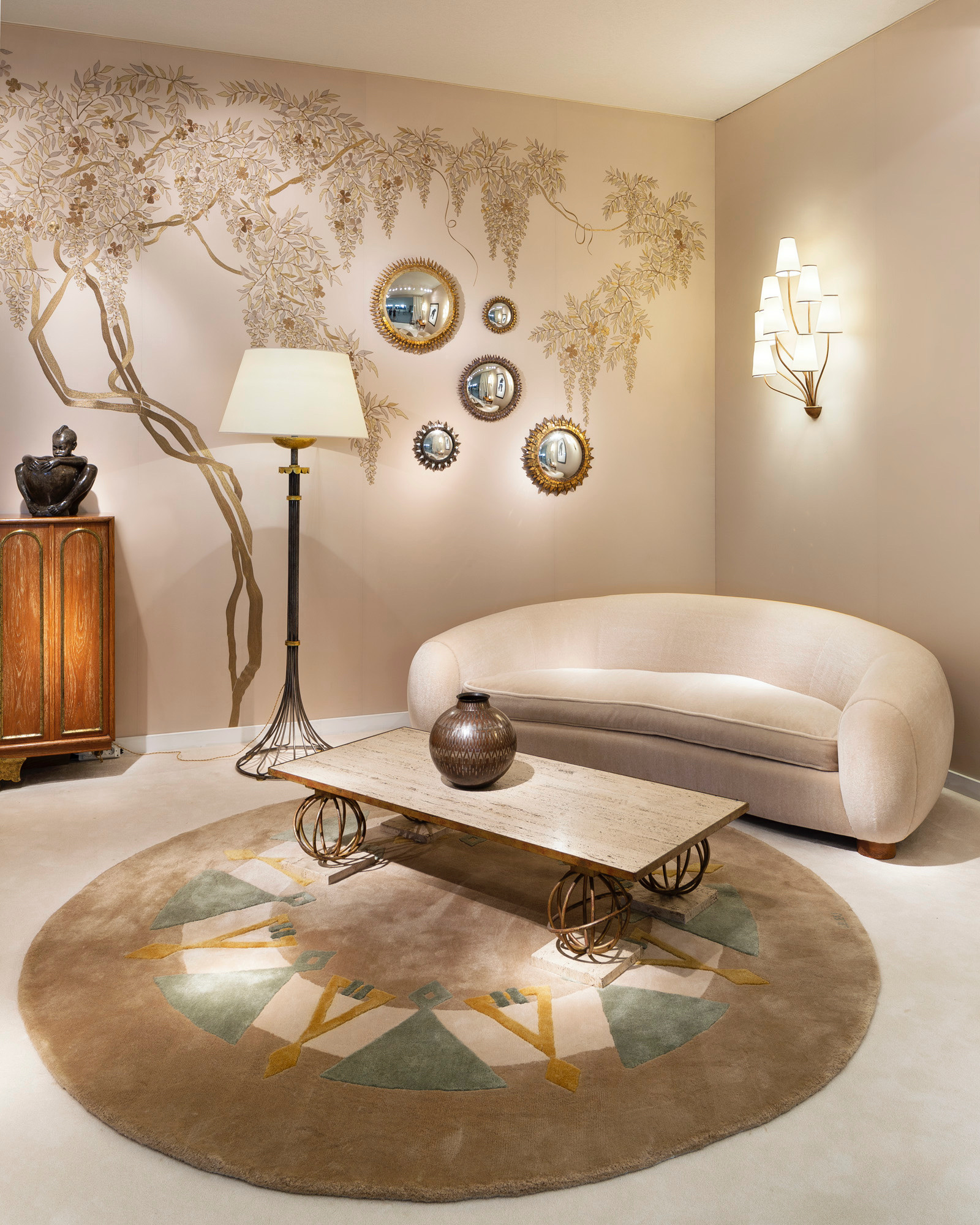


Besides the time period in which they were produced, the one thing that unites the pieces at Galerie Marcilhac is that they were key in developing new forms or techniques. Take, for example, the work of Émile-Jacques Ruhlmann, who created elegant timber works with a sophisticated complexity that helped to define the Art Deco style; or that of Jean Michel Frank, which Marcilhac describes as “perhaps the acme of Modernism that still bewilders us today.”
And, while the pieces in the gallery undeniably celebrate and evoke a particular point in time, they are just as suited to contemporary interiors. Marcilhac points to an ebony desk by Paul Dupré-Lafon, whose work combines a Cubist philosophy with a Mid-Century Modern design aesthetic. “The desk we have in the gallery is free of ornament, rational and functional,” he explains, drawing attention to the three trays that pull forward to accommodate visitors, and the sophisticated Hermès leather top.
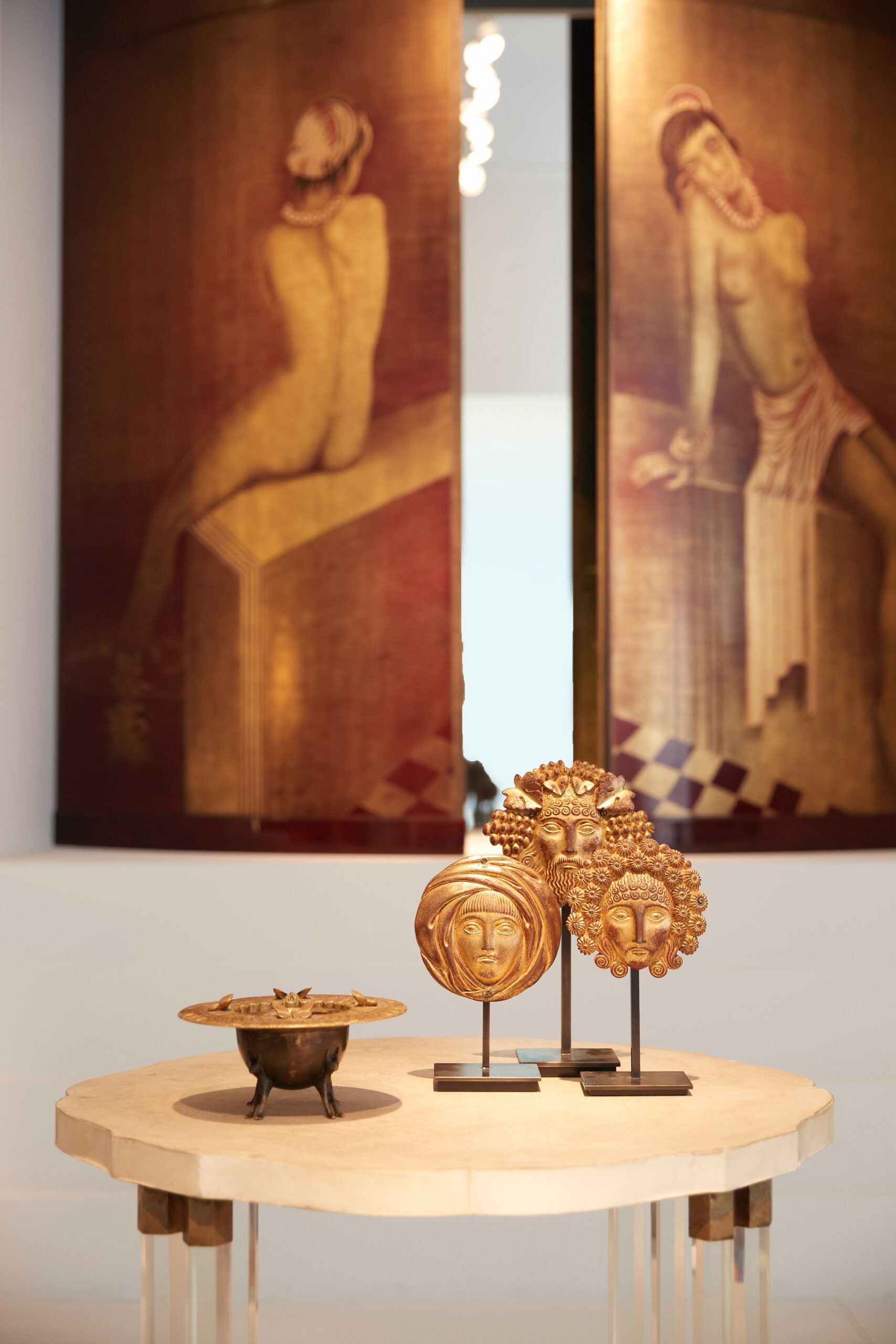
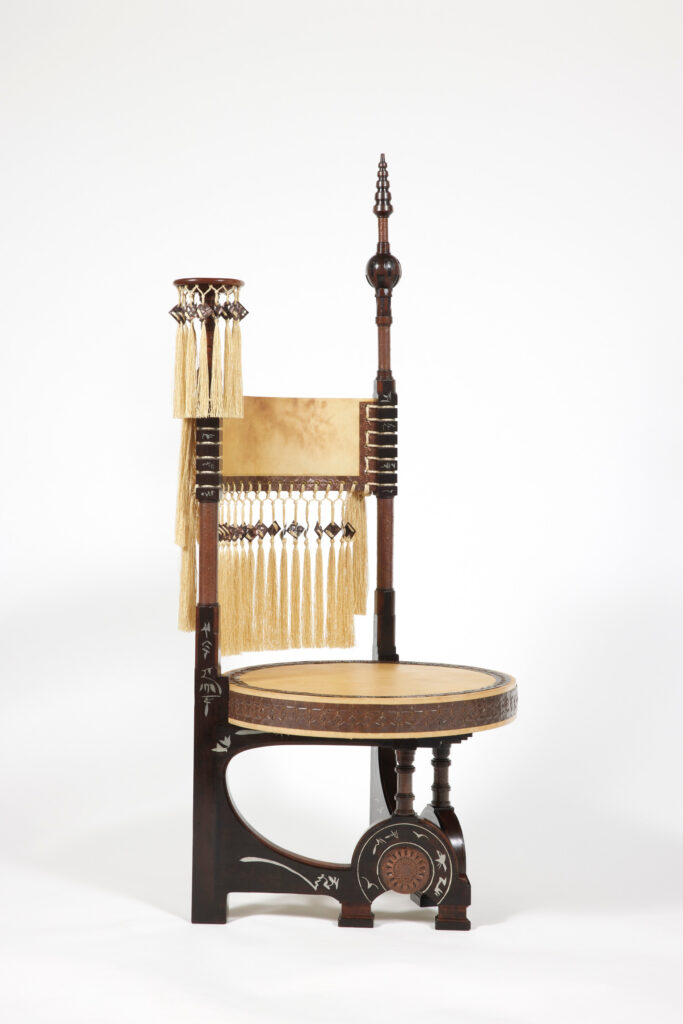
“In my opinion, this is the last period when we produced luxury furniture with artisanal knowledge,” he says. “The diversity of materials used is the result of a rare know-how – lacquer, eggshell, and shagreen are materials widely used in furniture and objects, making them very precious. I also like the search for pure forms, this way of inhabiting space with geometric volumes and creating a coherent whole.”
We have always stood for respecting the integrity of the objects. A work of art that has been restored too much would destroy the meaning of our profession.
Félix Marcilhac
Marcilhac and his team discover these pieces around the world, constantly monitoring the international market for private collectors re-doing their interiors and inherited pieces that may have been in one family for generations finally coming up for sale. When a precious new piece is obtained, the restoration process is a careful one. “We have always stood for respecting the integrity of the objects,” explains Marcilhac. “A work of art that has been restored too much would destroy the meaning of our profession. After all, the scratches are what we are looking for.”
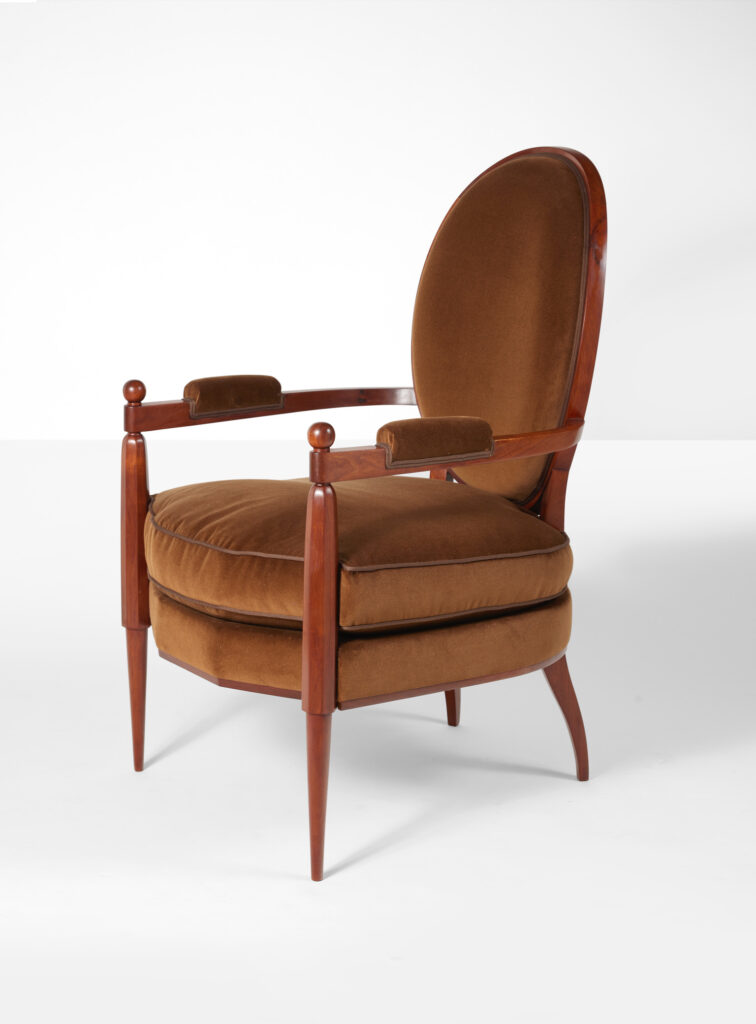
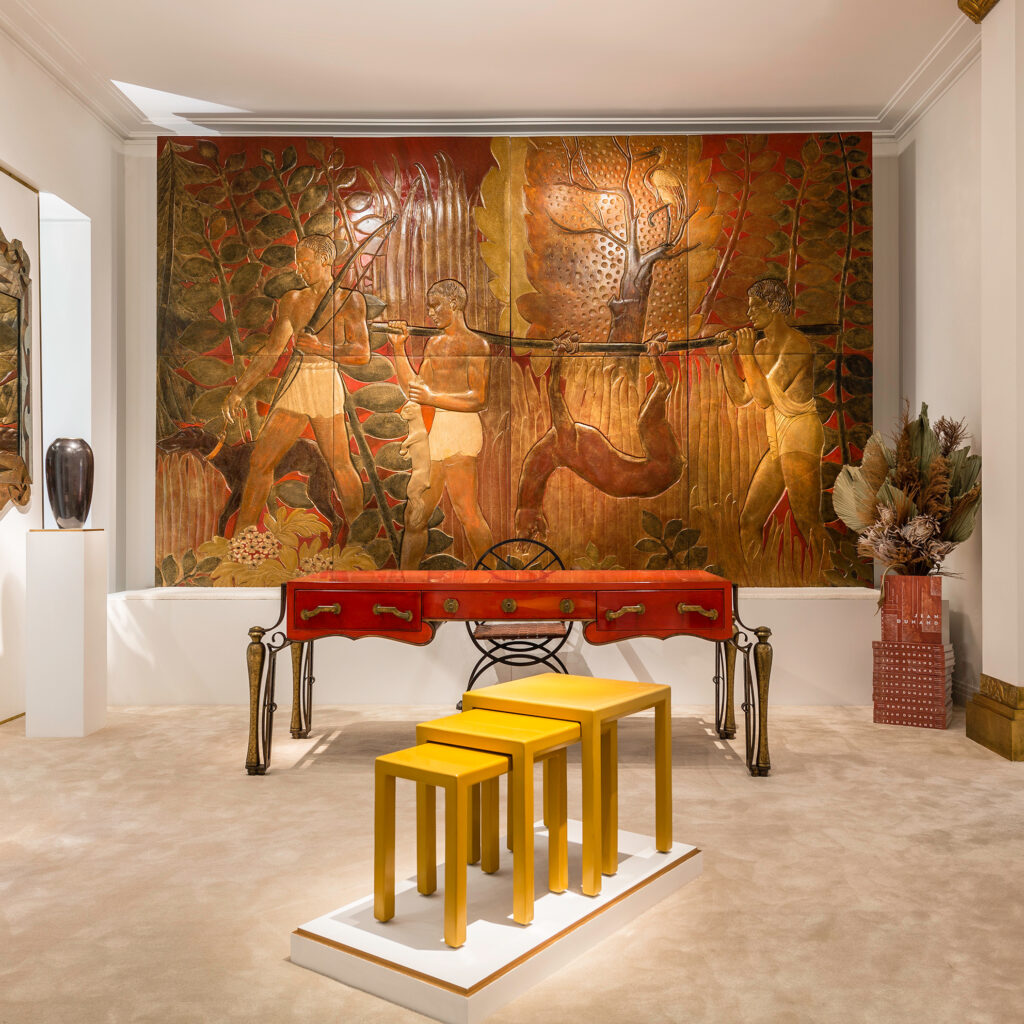

Alongside the early 20th-century pieces on display are exhibitions by contemporary artists whose work relates to the gallery’s universe. Painter and sculpture Kelli Bedrossian, for example, shares a stylistic affiliation with what Marcilhac describes as “the plastic vocabulary” of sculptors such as Joseph Csaky, Gusztáv Miklós, and Jean Lambert-Rucki. The gallery has even worked with designers to create new limited editions. In 2020, it partnered with Nicolas Aubagnac to create a collection of strikingly geometric bronze and travertine tables and consoles.
These newer works are continuing a story that began with the earlier 20th-century pieces. And, just as the pieces that Galerie Marcilhac exhibits are part of an ongoing narrative – one which tells the story of material excellence and a desire to bring a sense of craft and art to everyday life – so too is the gallery itself. “It is the capacity of a beautiful piece of furniture or a beautiful object to cross time and to arrive in our hands, to continue to delight us,” says Marcilhac. “My greatest pride and joy is passing this passion to collectors as my father passed it on to me. Transmission is the keyword.”
Effect Magazine is brought to you by Effetto



